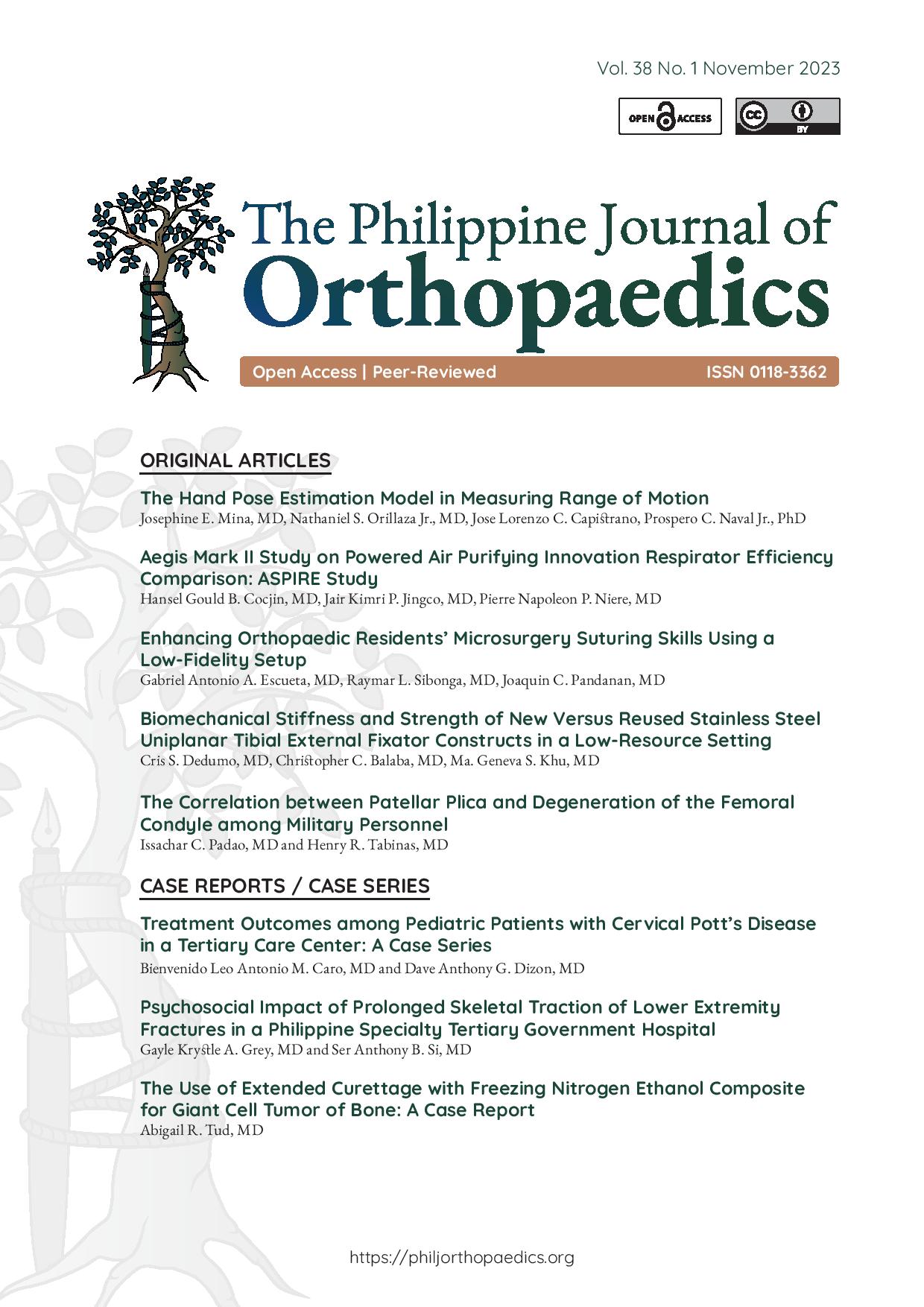Advancing Orthopaedic Care Through Innovation and Trauma Management
Main Article Content
Abstract
The Philippine Journal of Orthopaedics remains a cornerstone in the academic and research landscape of Philippine orthopaedics. Orthopaedic surgery is continually evolving, driven by improvements in musculoskeletal and trauma care outcomes. In this issue, we focus on trauma involving the pelvis, acetabulum, tibia, spine, and hand, as well as innovations that could shape the Philippine orthopaedic landscape.
Trauma management may differ from the ideal, yet outcomes can still be optimized. Delaying surgery for acetabular fractures by two weeks has been shown to yield similar outcomes to immediate treatment. Closed management of tibial fractures may also be a viable option for patients nearing skeletal maturity.
Understanding the epidemiology of spine disorders in our population is crucial. In a tertiary hospital
setting, traumatic spine disorders were the most common causes of admission (66%), while among
non-traumatic causes, tuberculous infection was the most common etiology (74.7%). Surgery for patients with intermediate SINS (Spinal Instability Neoplastic Score) was found to reduce both functional decline and the risk of revision surgery compared to medical management.
Percutaneous pinning of proximal phalanges and metacarpals under conventional radiographic guidance in the emergency room resulted in 47% of patients achieving good or excellent outcomes in terms of total active motion of the fingers on follow-up. A randomized controlled study on WALANT (Wide Awake Local Anesthesia No Tourniquet) for hand surgery concluded that lower concentrations of lidocaine may be sufficient for short procedures. Another study comparing the classic Atasoy flap to the Pentagonal flap for fingertip injuries found no significant differences in terms of technique, sensation, patient satisfaction, return to work, and complications. However, the Pentagonal flap was advantageous for larger defects where tension-free closure might be challenging.
Two papers reported innovative materials research. Digital finite element analysis was used to design and simulate biomechanical testing of materials for an external fixator clamp. The resulting 3D-printed plastic resin was then used to create iFix clamp prototypes, which displayed comparable deformation under axial loading when compared with conventional Roger-Anderson clamps.
Titanium nail-spanning systems have also been designed and manufactured locally for limb salvage surgery (primary knee resection-arthrodesis) in tumors around the knee, and they have proven useful when a prosthesis is not available.
I would like to congratulate the authors for their steadfast commitment to advancing Philippine orthopaedic research. As the field continues to evolve, the PJO will remain at the forefront of driving positive change, improving patient outcomes, and shaping the future of orthopaedic practice in the Philippines and beyond. As we enter our third year of publication, I wish everyone a Blessed Christmas and a Prosperous New Year on behalf of our Editor-in-Chief, Associate Editors, and dedicated editorial staff.
Mabuhay!
Article Details

This work is licensed under a Creative Commons Attribution 4.0 International License.

This work is licensed under a Creative Commons Attribution 4.0 International License.





